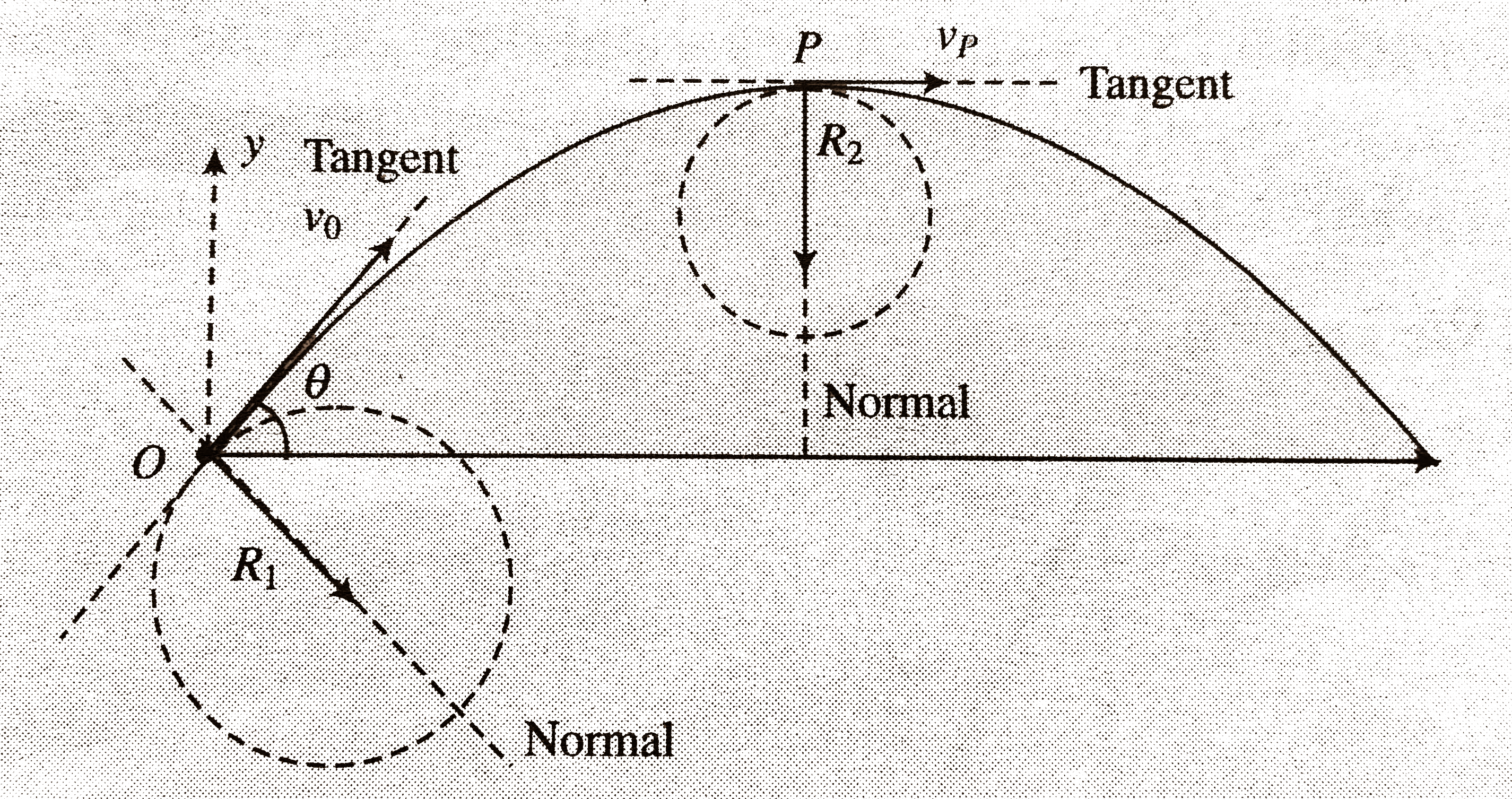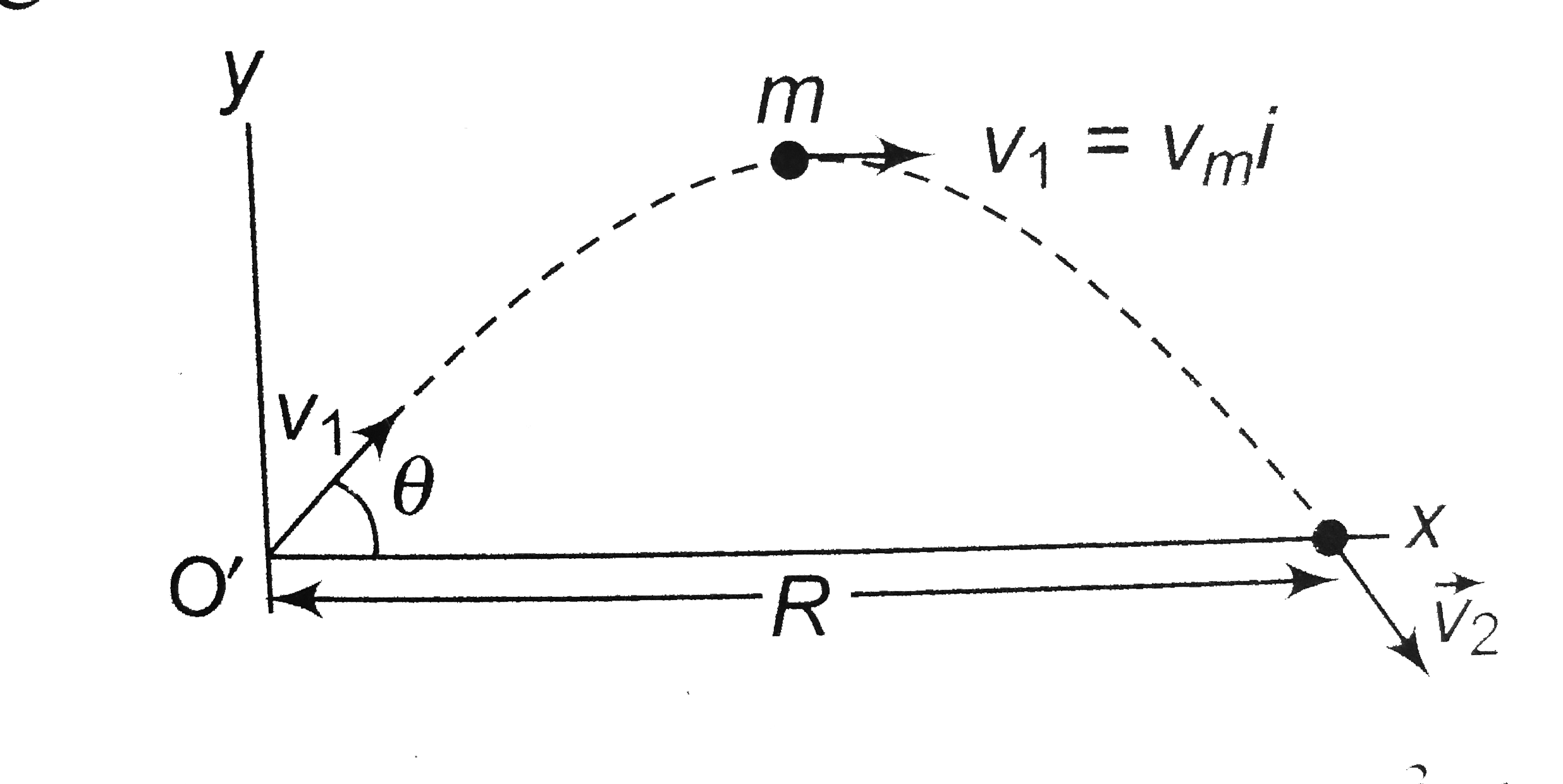Acceleration of a particle under projectile motion at the highest point of its trajectory is :
Step by step video & image solution for Acceleration of a particle under projectile motion at the highest point of its trajectory is : by Physics experts to help you in doubts & scoring excellent marks in Class 11 exams.
Updated on:21/07/2023Topper's Solved these Questions
Similar Questions
A particle is projected at angle θ with horizontal with velocity v0att=0. Find
(a) tangential and normal acceleration of the particle at t=0 and at highest point of its trajectory.
(b) the radius of curvature a=0 and highest point.
 .
.
View SolutionA particle of mass m is thrown with speed v0 at angle 30∘ with horizontal. Find the angular momentum about the point of projection when the particle is at the highest point of its trajectory.
View Solution
Knowledge Check
A projectile of mass m is launched with an initial velocity →vi making an angle θ with the horizontal as shown in figure. The projectile momentum of the particle about the origin when it is at the highest point of its trajectory is.
 .A−m3isinθ2cosθ2gˆkBm3isinθ2cosθ2gˆkC−m3isinθ2cosθgˆkD2m3isinθ2cosθgˆk
.A−m3isinθ2cosθ2gˆkBm3isinθ2cosθ2gˆkC−m3isinθ2cosθgˆkD2m3isinθ2cosθgˆkThe kinetic energy of a projectile at the highest point is-
AZeroBMaximumCMinimumDEqual to total energyAverage velocity of a particle in projectile motion between its starting point and the highest point of its trajectory is (projectin speed = u, angle projection from horizontal =θ)
AucosθBu2(√1+3cos2θ)Cu2(√2+cos2θ)Du2(√1+cos2θ)
Motion Of A Particle Under Gravity
View SolutionA particle is projected from the ground with an initial speed v at an angle θ with horizontal. The average velocity of the particle between its point of projection and highest point of trajectory is [EAM2013]
View SolutionA particle of mass m is projected with velocity v at an angle θ with the horizontal. Find its angular momentum about the point of projection when it is at the highest point of its trajectory.
View SolutionA javelin thrown into air at an angle with the horizontal has a range of 200 m. If the time of flight is 5 second, then the horizontal component of velocity of the projectile at the highest point of the trajectory is
View SolutionThe projectile has only vertical component of velocity at the highest point of its trajectory.
At the highest point, only one component of velocity is present.
View Solution

